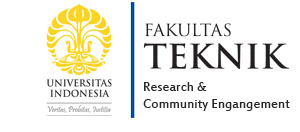| Authors | E. Kusrini, R. Arbianti, N. Sofyan, M.A.A. Abdullah, F. Andriani |
|---|---|
| Publication Name | Spectrochimica Acta Part A: Molecular and Biomolecular Spectroscopy |
| Abstract | In the presence of hydroxyl and amine groups, chitosan is highly reactive; therefore, it could be used as a carrier in drug delivery. For this study, chitosan–Sm complexes with different concentrations of samarium from 2.5 to 25 wt.% have been successfully synthesized by the impregnation method. Chitosan combined with Sm3+ ions produced a drug carrier material with fluorescence properties; thus, it could also be used as an indicator of drug release with ibuprofen (IBU) as a model drug. We evaluated the spectroscopic and interaction properties of chitosan and Sm3+ ions, the interaction of chitosan–Sm matrices with IBU as a model drug, and the effect of Sm3+ ions addition on the chitosan ability to adsorb the drug. The result showed that the hypersensitive fluorescence intensity of chitosan–Sm (2.5 wt.%) is higher than the others, even though the adsorption efficiency of chitosan–Sm 2.5 wt.% is lower (29.75%) than that of chitosan–Sm 25 wt.% (33.04%). Chitosan–Sm 25 wt.% showed the highest efficiency of adsorption of ibuprofen (33.04%). In the release process of ibuprofen from the chitosan–Sm–IBU matrix, the intensity of orange fluorescent properties in the hypersensitive peak of 4G5/2 ? 6H7/2 transition at 590 nm was observed. Fluorescent intensity increased with the cumulative amount of IBU released; therefore, the release of IBU from the Sm-modified chitosan complex can be monitored by the changes in fluorescent intensity. |
| Publisher | Pergamon Press Ltd. |
| ISSN | 13861425 |
| Page | 77-83 |
| Volume | 120 |
| Impact Factor (JCR) | --- |
| SJR | 0.717 |
| Ranking Quartile | Q1 |
| Website | http://www.sciencedirect.com/science/article/pii/S1386142513011396 |
Modification of Chitosan by Using Samarium for Potential Use in Drug Delivery System
LATEST POST
CALL FOR PROPOSAL: Penerimaan Hibah Seed Funding Publikasi FTUI 2025
CALL FOR PROPOSAL: Penerimaan Hibah Osaka Gas Tahun 2025
6 Dosen Fakultas Teknik Universitas Indonesia Catatkan 8 Paten
Mahasiswa FTUI Kaji Potensi Hidrogen Alami di Sulawesi, Didorong Jadi Rujukan Kebijakan Nasional
Mahasiswa FTUI teliti potensi hidrogen geologis pertama di Indonesia
POPULAR NEWS
LATEST VIDEOS
LOGIN






